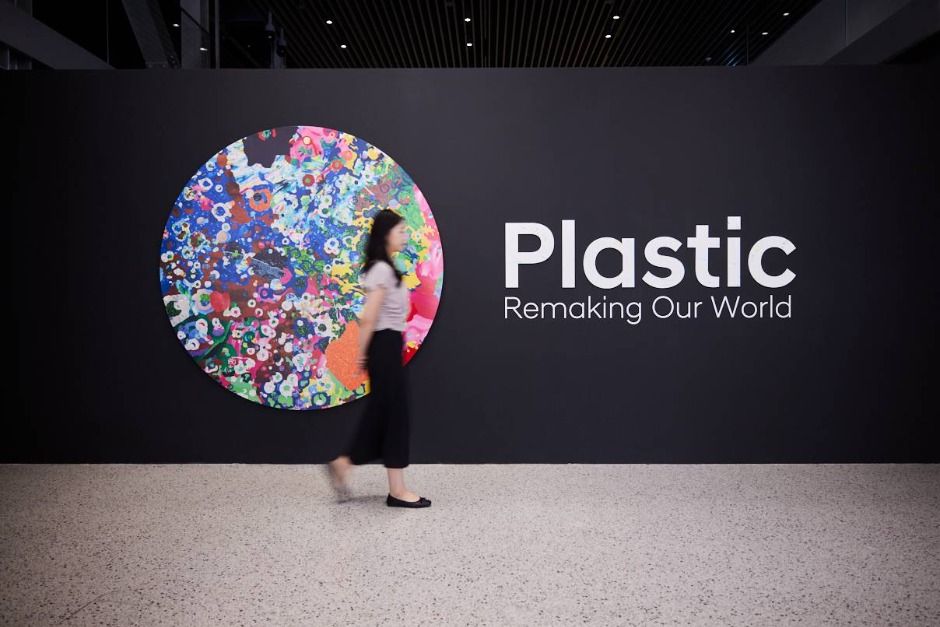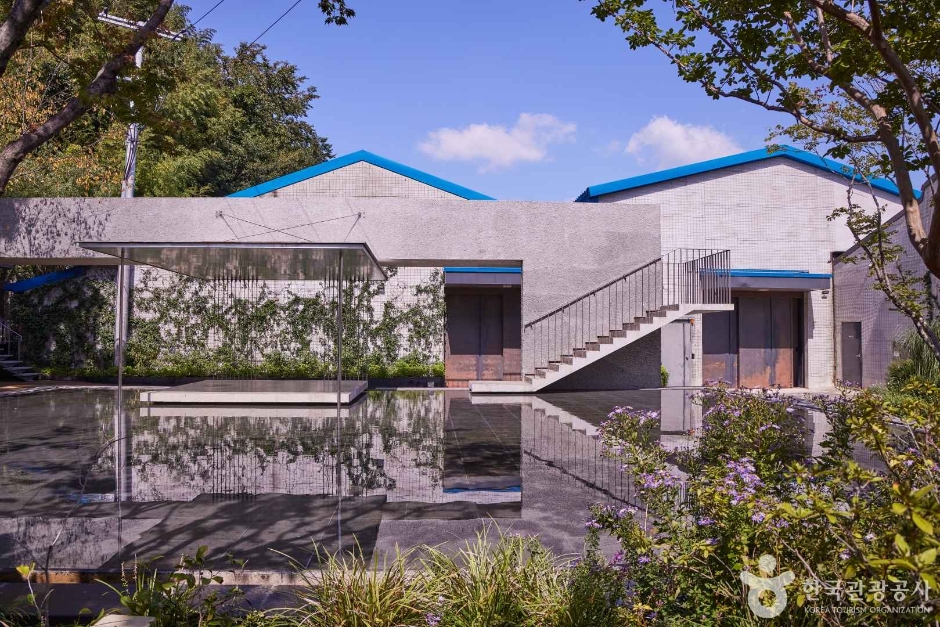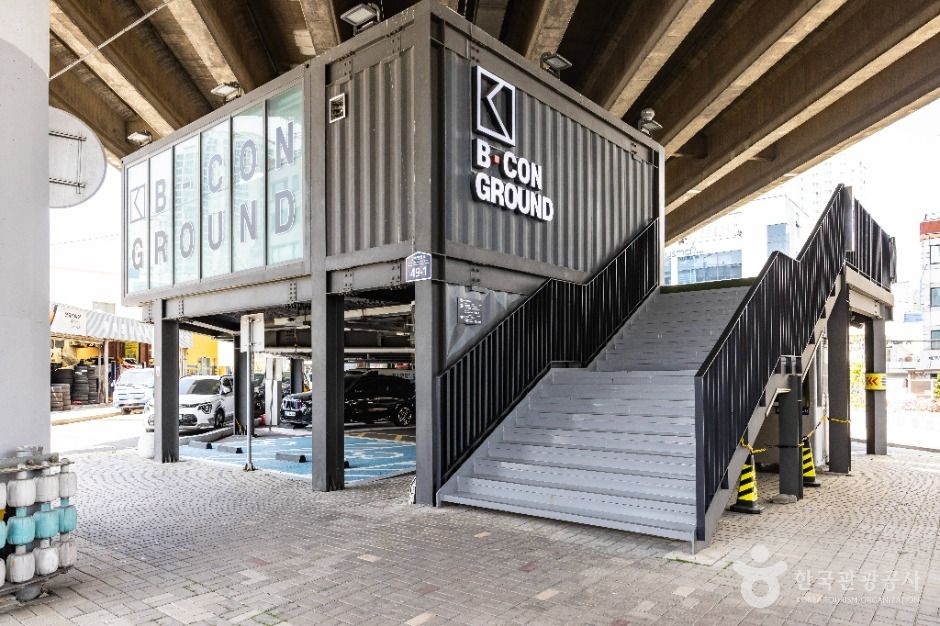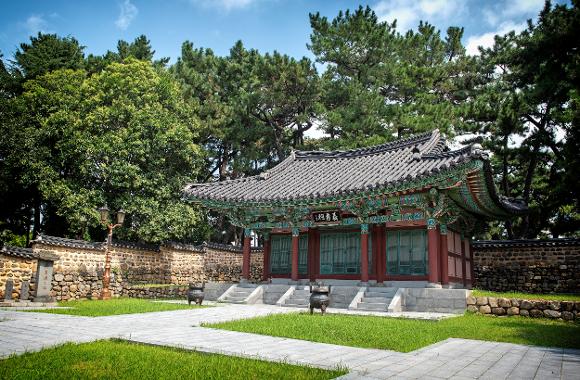Olive Young - Yeonsan Togok Branch [Tax Refund Shop] (올리브영 연산토곡점)
768.1M 2024-06-26
112 Gwajeong-ro, Yeonje-gu, Busan
-
Homeplus Stores - Busan Banyeo Branch [Tax Refund Shop] (홈플러스스토어즈 부산반여)
1.2Km 2024-04-22
37, Seonsuchon-ro 21beon-gil, Haeundae-gu, Busan
-
Hyundai Motorstudio Busan (현대 모터스튜디오 부산)
1.4Km 2025-08-08
20 Gurak-ro 123beon-gil, Suyeong-gu, Busan
Hyundai Motor Studio, operating under the concept of “Design to live by,” showcases various design-related exhibitions that go beyond automobile designs to explore various aspects of our lives through design. The studio, located in the F1963 cultural complex, offers exhibitions with diverse themes, master talks, and other content, creating a space to communicate with visitors.
F1963
1.5Km 2025-11-17
20 Gurak-ro 123beon-gil, Suyeong-gu, Busan
F1963 is a representative cultural complex and an emerging landmark in Busan. This factory produced wires in the past for about 45 years from 1963 to 2008. 2016 Busan Biennale was a turning point for this building as the building was transformed into a space for art and culture; various cultural events take place and it has an art library, exhibition hall, and concert hall. The base design and framework from the old factory were preserved during the renovation, leaving traces of the old building that give its unique atmosphere. Regenerated architecture and walking trails outside the space are designed to offer a pleasant walk. Visitors can also enjoy food, drinks, and activities inside the building from renowned branch stores such as Terarosa, a famous cafe in Gangneung; Boksoondoga, where one can taste the essence of traditional Korean fermented makgeolli (unrefined rice wine), and Hwasumok Flower & Garden, where visitors can take gardening and flower classes.
Hyewonjeongsa Temple (혜원정사)
1.5Km 2024-02-22
47 Gobun-ro 68beon-gil, Yeonje-gu, Busan
The "jeongsa" of Hyewonjeongsa Temple refers to a temple, meaning a place where practitioners dwell and dedicate themselves to spiritual cultivation. It houses various halls such as Daeungbojeon, Manbuljeon, Samseonggak, Bell Pavilion, Yosachae, and Statue of Avalokitesvara Bodhisattva. There is a hiking trail leading to the summit of Myobongsan Mountain, from where one can enjoy a panoramic view of Busan city.
B-Con Ground (비콘그라운드)
1.8Km 2025-11-17
49-1 Mangmibeonyeong-ro, Suyeong-gu, Busan
B-Con Ground is a cultural complex in Busan, built by utilizing the empty space under an overpass. The complex is a cultural hub offering various exhibitions, cultural events, activities, and creative spaces for visitors. From playground and shopping ground to cafes, restaurants, art galleries, and a family deck, it truly offers all under one roof. Moreover, it provides a space for exhibition for disabled artists, as well as a venue for social entrepreneurs to hold exhibitions, cultural events, and sell artwork.
Himart - Centum Branch [Tax Refund Shop] (하이마트 센텀점)
1.9Km 2024-04-18
207, Haeun-daero, Haeundae-gu, Busan
-
Mangmidangil Street (망미단길)
2.1Km 2025-11-17
Suyeong-dong, Suyeong-gu, Busan
Mangmidangil Street referst to the main street that connects the cultural alleys in Suyeong-gu, Busan. The area is home to a variety of cozy cafes, photo studios, book stores, indie stores, workshop spaces, and clothing stores, attracting many visitors. Nearby attractions include B-Con Ground, a cultural complex featuring various facilities, and Suyeong Sajeok Park, an ideal spot to unwind and explore local history.
Suyeong Sajeok Park (수영사적공원)
2.1Km 2021-08-06
43, Suyeongseong-ro, Suyeong-gu, Busan
+82-51-610-4372
Suyeong-gu of Busan is a historical district nestled between Geumnyeonsan Mountain and Gwangalli Beach. It was the site of the Gyeongsang Jwado Marine Headquarters during the Joseon dynasty. In fact, its name 'Suyeong' was derived from 'Sugunjeoldosayeong,' meaning 'marine headquarters.'
The Suyeong Sajeok Park was established in commemoration of the spirit of the Suyeong residents. It is designed to show their maritime lifestyle.
Olive Young - Busan Yeonsan Branch [Tax Refund Shop] (올리브영 부산연산점)
2.1Km 2024-06-27
16 Bansong-ro, Yeonje-gu, Busan
-





 English
English
 한국어
한국어 日本語
日本語 中文(简体)
中文(简体) Deutsch
Deutsch Français
Français Español
Español Русский
Русский